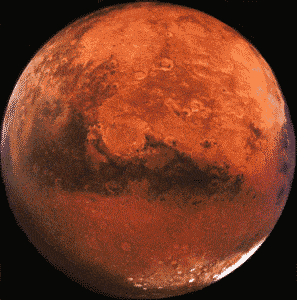Several studies performed in the last decade have shown Mars used to be warmer and wetter, but scientists still haven’t figured out exactly why we are seeing these clues and how our red neighbor used to look like ages ago. Now, a new study concluded that Mars was much, much wetter than previously believed and that its atmosphere was significantly thicker as well.

Dufek analyzed ancient volcanic eruptions and surface observations by the Mars rover Spirit and he published his findings in Geophysical Research Letters.
“Atmospheric pressure has likely played a role in developing almost all Mars’ surface features,” he said. “The planet’s climate, the physical state of water on its surface and the potential for life are all influenced by atmospheric conditions.”
His first research tool was a rock fragment shot into the Martian atmosphere during a volcanic eruption some 3.5 billion years ago. The rock landed in the volcanic sediment, creating what is called a divot (or bomb sag), eventually solidifying in the same area. His next tool was, of course, the Mars rover Spirit. In 2007, Spirit landed at that site, known as Home Plate, and took a closer look at the imbedded fragment. Dufek and colleagues received enough data to determine the shape, size and depth of the bomb sag, enabling them to find out enough to make their own bomb sags – which they did.
They hit the lab and created sand beds using the same grain size as the one observed by Rover in that spot. The team then propelled various materials (glass, various rocks, even steel) at different speeds into dry, saturated and damp sand beds, comparing the resulting divots with the one observed on Mars. By varying the speeds, they found out that the rock hit the sand at a speed just under 40 meters per second, and in order for a rock like that to move through the atmosphere at that peak velocity, the atmosphere would have to be about 20 times thicker than it is today.
But perhaps even more interesting was the fact that no matter the type of the particle, the only times the lab bomb sag looked like the real one was when the sand was water saturated.
“Our study is consistent with growing research that early Mars was at least a transiently watery world with a much denser atmosphere than we see today,” said Dufek. “We were only able to study one bomb sag at one location on the Red Planet. We hope to do future tests on other samples based on observations by the next rover, Curiosity.”






